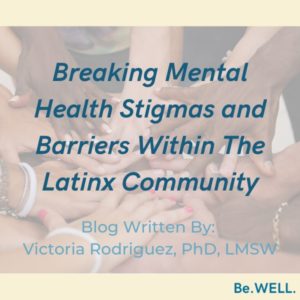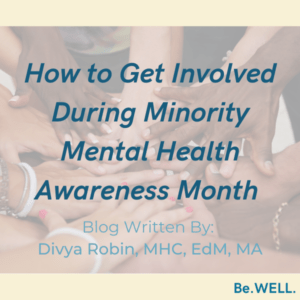Mental health stigmas result from negative misconceptions about mental illness and mental health treatment. Often the result of cultural norms, beliefs, and perceptions, as well as a history of systemic inequities, these stigmas are especially prevalent in the Latinx community. If these stigmas are not recognized and efforts not made to break them, they will continue to be a barrier to Latinx individuals getting necessary mental healthcare to live happy and healthy lives for themselves and future generations.
Mental Health Stigmas, Education, and Barriers in the Latinx Community
Within the Latinx community, common stigmas about mental health and therapy steam from a belief that mental health issues are dangerous and self-inflicted, things will get better on their own, and one should be strong and push through difficult times. There is often a “don’t talk about it” attitude. Some Latinx feel that buying into mental health diagnosis and treatment is a step toward assimilation and thus a step away from cultural roots. Others, whose cultures are highly religious, may feel they can pray away mental health issues. A general lack of understanding and conversation about mental health and the importance of going to therapy secures the stigmas as reality. Access to care due to poverty and inequities, as well as language barriers, causes a greater need for therapy and creates barriers for those in the community to connect to appropriate mental healthcare.
The Need for Mental Health Care in the Latinx Community
Studies show that the need for mental health care and attention is necessary for the Latinx community. The Latinx community is the largest growing ethnic group; and it is one with some of the highest prevalence of those with mental health issues not seeking appropriate mental health treatment. In 2018, the US Department of Health and Human Services, SAMHSA, estimated that non-Hispanic Whites received mental health treatment twice as much as Hispanics. In 2017, suicide was the second largest cause of death for Latinx 15-34 years of age. Hispanic females in grades 9-12 are 40% more likely to have a suicide attempt than their non-Hispanic white counterparts of the same age. Living in poverty boosts the likelihood of anxiety and depression. Immigrants tend to higher associations with PTSD and trauma. American born Latinx may find increased difficulty balancing between two cultures and identities.
Breaking Stigmas and Seeking Therapy as a Latinx
Now more than ever, there is a deeper need to understand the impacts of stigmas and mental health education on the Latinx community and ways to educate against stigmas to connect people to appropriate mental health care. Breaking stigmas and seeking therapy starts with education and viewing therapy as an additional tool and resource that can help improve mental health and overall quality of life. When seeking a therapist, it is essential to find a therapist that works for you. Find someone that you can relate to, who is culturally sensitive, engaging, and ensures to incorporate your values into each session. If therapy feels uncomfortable at first, remind yourself that you are worth investing in, and taking ownership of your mental health is not only bettering yourself but at large, it will assist in breaking greater stigmas in the community. Know that therapy is a process, and adjusting to something new, especially if stigmas around it existed, takes time. Be patient, go at your own pace. Assisting love ones in breaking the stigma might be a little harder to do. Be patient and try to guide your family and friends that hold strict stigmas by having an open discussion when you are ready. In these conversations, be as concise and direct as possible and explain how therapy is a useful tool for better health.



